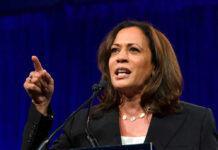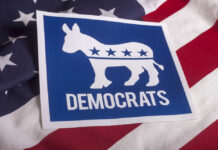
(TheLastPatriotNews.com) – While higher interest rates have been challenging for bank stocks, potentially setting them on course for annual losses, the banking sector’s reserves stand robustly at a three-decade high, as stated by DBRS Morningstar. Still, bankers are warning that they believe a recession is coming.
The banking sector has faced increased selling activity in shares since the Federal Reserve indicated in September that they might sustain elevated rates longer than previously predicted. This stern stance from the Federal Reserve has curtailed the stock market’s upward momentum this year and triggered a marked selloff in the nearly $25 trillion Treasury market.
Kathy Jones, the chief fixed-income strategist at Schwab Center for Financial Research, commented to MarketWatch, “Right now, there is nothing standing in the way of higher Treasury yields.” She added, “It’s fairly obvious it’s not good for banks. The rise in yields has just been relentless.”
The central issue is that increased yields for new Treasury bonds diminish the worth of portfolios that contain previously issued lower coupon debt. Moreover, banks often have a significant share in commercial property loans, which could face refinancing challenges if the interest rates persist at these elevated levels.
FactSet reports indicate a 5.5% drop in the S&P 500 financial sector this year through Tuesday. Similarly, the well-known Financial Select Sector SPDR ETF XLF registered a 5.5% decrease in 2023.
However, examining the reserves of the banking industry suggests that financial institutions are gearing up for potential credit risks and possible losses in a recessionary environment. Current data reveals that the reserve coverage for banking against nonperforming loans is at 225% for the second quarter – a peak in thirty years.
DBRS Morningstar analysts Eric Chan and Michael Driscoll mentioned in their recent Tuesday report, “Although credit quality remained relatively benign even as the Fed started raising interest rates in March 2022, the industry has nonetheless been increasing its reserves.” They believe that even as credit losses might ascend, the banking sector, due to post-2007-2008 financial crisis reforms, is well-prepared to “weather any potential storms.”
Commenting on the rising banking reserves, Jones from Schwab stated, “That’s logical. They are saying: Things don’t look so great right now. I’m going to have to be more careful.”
A significant event that jolted the banking sector was the collapse of Silicon Valley Bank in March, which raised broader banking crisis concerns following its sale of a substantial securities portfolio at a considerable loss. In response, the Federal Reserve launched an emergency lending service for banks, ensuring they could access liquidity and avoid forced asset disposals. This facility saw a surge in demand in September but also bolstered confidence in the banking domain.
Lastly, concerning other market indicators, the Dow Jones Industrial Average DJIA showed a negative trend for this year on Tuesday. Meanwhile, the S&P 500 index SPX reduced its annual growth from 17% in late August to around 10.2%, as reported by FactSet.














